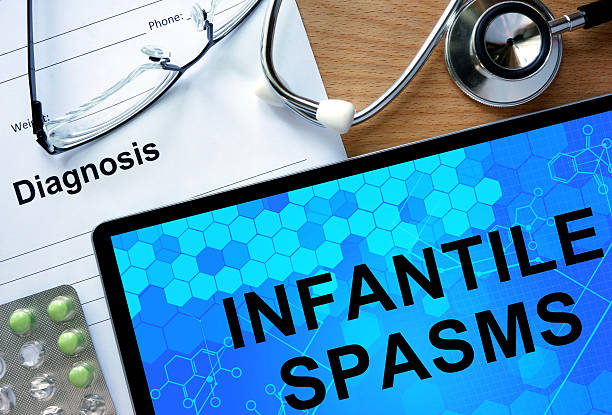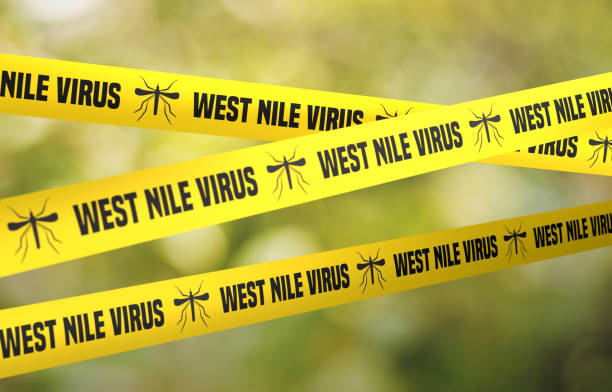Uterine fibroids, also called leiomyomas or myomas, are muscle tumors that develop on the uterus. These benign growths rarely turn cancerous. They can vary significantly in size, location, and number. Some are microscopic, while others can enlarge the uterus. Fibroids typically appear during childbearing years (ages 30–40) but can occur at any age. They are more frequent in Black women than in White women, and tend to grow faster in Black women as well.
Understanding Fibroids vs. Polyps
Uterine fibroids and polyps are distinct conditions, although they share some symptoms. Polyps are smaller growths originating from the uterine lining and can block fallopian tubes, hindering pregnancy. A small percentage (around 5%) of polyps might be cancerous or precancerous, so gynecologists often recommend removal. Treatment options include medication, surgery, or watchful waiting to see if they resolve on their own.
Types of Fibroids
The type of fibroid depends on its location within the uterus.
- Intramural fibroids are the most common type, growing within the uterine wall.
- Submucosal fibroids: fibroids that project into the uterine cavity.
- Subserosal fibroids: fibroids that develop on the outer side of the uterus.
- Occasionally, submucosal or subserosal fibroids may protrude from a stalk inside or outside the uterus, known as pedunculated fibroids.
Common Symptoms of Fibroids
Fibroids may cause no symptoms at all, or they can trigger various issues, including:
- Heavy, prolonged, or painful menstrual periods
- Lower abdominal or back pain
- Pain during intercourse
- Frequent urination
- Pelvic pressure or discomfort
Causes of Fibroids
The exact cause of uterine fibroids remains unknown, but hormones and genetics are likely contributors.
- Hormones: Estrogen and progesterone, the hormones responsible for thickening the uterine lining during the menstrual cycle, also appear to influence fibroid growth. As hormone production decreases during menopause, fibroids typically shrink.
- Genetics: Research has identified genetic differences between fibroids and normal uterine cells, suggesting a genetic predisposition to their formation.
- Other factors: Substances in the body involved in tissue maintenance, such as insulin-like growth factor, may contribute to fibroid growth. Additionally, fibroids contain more extracellular matrix (ECM) than normal cells, giving them a fibrous texture. The ECM also stores growth factors and triggers cellular changes.
Risk factors of uterine fibroids
Several factors may increase the risk of developing uterine fibroids:
- Age: Fibroids are more common during the reproductive years but can occur at any age.
- Race: Black individuals are at a higher risk compared to White individuals.
- Early menstruation: Starting menstruation at a young age may elevate the risk.
- Early use of birth control pills: Using birth control pills before the age of 16 may also increase the risk.
- Vitamin D deficiency: Low levels of vitamin D have been associated with a higher incidence of fibroids.
- Dietary factors: Consuming excessive red meat and insufficient green vegetables, fruits, or dairy products may contribute to the risk.
- Alcohol consumption: Heavy alcohol consumption may be linked to a higher risk.
- Family history: Having a close relative, such as a mother or sister, with fibroids increases the likelihood of developing them.
Diagnosing Uterine Fibroids
During a routine pelvic exam, your doctor might suspect fibroids based on an irregular or enlarged uterus. Further tests for confirmation may include:
- Ultrasound: Utilizes sound waves to create an image of the uterus, revealing the size, location, and number of fibroids.
- Blood tests: assess anemia (low red blood cell count) or other bleeding disorders that could be caused by fibroids.
- Magnetic resonance imaging (MRI): Provides detailed images for better treatment decisions, especially for large fibroids or those near menopause.
- Hysterosonography: Involves inserting saline solution into the uterus to visualize submucosal fibroids and the uterine lining.
- Hysterosalpingography: X-ray examination with dye to assess blocked fallopian tubes.
- Hysteroscopy: A thin, lighted telescope is inserted through the cervix to examine the uterine cavity and fallopian tube openings for fibroids.
Treatment Options for Uterine Fibroids
The most suitable treatment depends on factors like symptom severity, desire for pregnancy, age, and fibroid location. Here are some common approaches:
Watchful Waiting: If symptoms are mild or absent, a doctor may recommend watchful waiting. Since fibroids are non-cancerous and may grow slowly or not at all, this approach involves monitoring without immediate intervention. Fibroids might even shrink or disappear after menopause.
Medications: Several medications can manage fibroid symptoms:
- Birth control pills: These can reduce menstrual bleeding.
- Nonsteroidal anti-inflammatory drugs (NSAIDs): Ibuprofen or naproxen can alleviate pain.
- Vitamins and iron supplements are helpful for managing energy levels if heavy bleeding causes anemia.
Other medications include:
- Gonadotropin-releasing hormone (GnRH) agonists: These induce temporary menopause by blocking estrogen and progesterone, potentially shrinking fibroids. They are administered as shots and might be used before surgery.
- GnRH antagonists: These work differently to reduce or stop periods. Some medications combine GnRH antagonists with estrogen and progestin and are taken orally.
- Progestin-releasing intrauterine device (IUD): This device can control heavy bleeding and prevent pregnancy but may not be suitable if fibroids are within the uterine cavity.
- Tranexamic acid: This medication, which doesn’t involve hormones, is taken during heavy bleeding days to reduce flow.
Surgery: For moderate to severe symptoms, surgery may be necessary. Options include:
- Myomectomy: This procedure removes fibroids while preserving healthy tissue, making it suitable for those planning pregnancy. Myomectomy can be performed through various methods, including abdominal surgery or laparoscopy.
- Endometrial ablation: Using techniques like laser, electric current, or freezing, this surgery removes or destroys the uterine lining, often resulting in the cessation of periods. It’s typically performed as an outpatient procedure.
- Uterine fibroid embolization (UFE) or uterine artery embolization (UAE): Here, a doctor blocks blood flow to fibroids by inserting gel or plastic particles into nearby blood vessels, causing fibroids to shrink.
- Hysterectomy: This involves the complete removal of the uterus and is the only definitive cure for fibroids. It’s a major surgery with various approaches, including abdominal or laparoscopic methods.
Complications of uterine fibroids
While uterine fibroids are typically not life-threatening, they can lead to complications for some individuals, notably anemia due to heavy blood loss. Anemia occurs when there is a significant drop in red blood cells, often resulting from excessive bleeding. In such cases, your doctor may recommend iron supplements to prevent or manage anemia. Severe cases may require blood transfusions.
Size of Fibroids and Risks
Small fibroids usually do not produce symptoms and may not require treatment. Monitoring symptoms alongside your doctor is typically the approach. However, larger fibroids can pose serious health risks, such as intense pain and heavy bleeding. Treatment decisions depend on factors such as symptom severity, fibroid size, quantity, and location. Most fibroids range from 2 to 6 centimeters, but those larger than this can lead to significant bleeding, and their removal may present challenges for doctors.
Prevention Strategies
While fibroids cannot be entirely prevented, research suggests that certain lifestyle habits may reduce the risk of developing them. High-sugar diets have been associated with a heightened risk in some individuals, while consuming fresh fruits and cruciferous vegetables like arugula, broccoli, cabbage, cauliflower, collard greens, and turnip greens may lower the odds. Cruciferous vegetables are rich in various nutrients, including beta-carotene, folate, vitamins C, E, and K, as well as fiber. Additionally, regular exercise has been linked to a reduced likelihood of developing uterine fibroids.
Uterine Fibroids and Pregnancy
While most people with uterine fibroids do not experience fertility issues, some fibroids can lead to infertility or pregnancy loss. Pregnancy with fibroids also increases the risk of complications for both the mother and the baby, including premature birth and restricted fetal growth.
In summary, while uterine fibroids are generally benign, they can lead to complications such as anemia and pose risks during pregnancy. Monitoring symptoms and seeking medical advice are crucial for managing fibroids and addressing potential complications. Adopting a healthy lifestyle, including a balanced diet and regular exercise, may also help reduce the risk of developing fibroids.
Can fibroids still grow after menopause?
It’s uncommon for uterine fibroids to continue growing after menopause. However, if you experience concerning fibroid symptoms following menopause, it’s essential to consult your doctor, as they could indicate another underlying health issue.
Key Points to note
- Uterine fibroids are noncancerous growths made of muscle tissue that develop on the uterus, varying in size, shape, and location.
- Symptoms of uterine fibroids may include heavy periods, lower abdominal or back pain, painful intercourse, and frequent urination.
- While the exact cause of uterine fibroids remains unknown, factors such as hormones, genetics, and other influences may contribute to their development.
- Treatment options range from watchful waiting for mild symptoms to medications and surgical interventions for more severe cases.
- Adopting a healthy lifestyle, including maintaining a balanced diet and engaging in regular exercise, may help reduce the risk of developing uterine fibroids.
Sources
- WomensHealth.gov: “Uterine fibroids fact sheet.”
- Mayo Clinic: “Uterine fibroids,” “Uterine polyps,” “Fibroid locations.”
- American College of Obstetricians and Gynecologists: “Hysterosalpingography.”
- UCLA Health: “Fibroids: Symptoms, Treatment, and Diagnosis.”
- American Journal of Clinical Nutrition: “Dietary glycemic index and load in relation to risk of uterine leiomyomata in the Black Women’s Health Study.”
- Journal of Obstetrics and Gynecology Research: “Vegetarian diet and reduced uterine fibroids risk: A case-control study in Nanjing, China.”
- Health System, University of Michigan: “Uterine Fibroids.”
- NYU Langone Health: “Shrink Them, Zap Them, Starve Them: Newer, Minimally Invasive Fibroid Treatments Offer Hysterectomy Alternatives.”
- MedlinePlus: “Relugolix, Estradiol, and Norethindrone,” Elagolix, Estradiol, and Norethindrone.”
- Surgical Science: “Huge Intravaginal Pedunculated Fibroid Embolization and Resectoscopy: A Case Report and Review of Literature.”
- McLeod Health: “What’s the Difference Between Fibroids and Uterine Polyps?”
- Fibroid Specialists of University Vascular: “Fibroid vs. Cyst vs. Polyp Differences.”
- Cleveland Clinic: “Uterine Fibroids.”
- Magnolia Regional Health Center: “What to Know About Uterine Fibroids After Menopause.”

